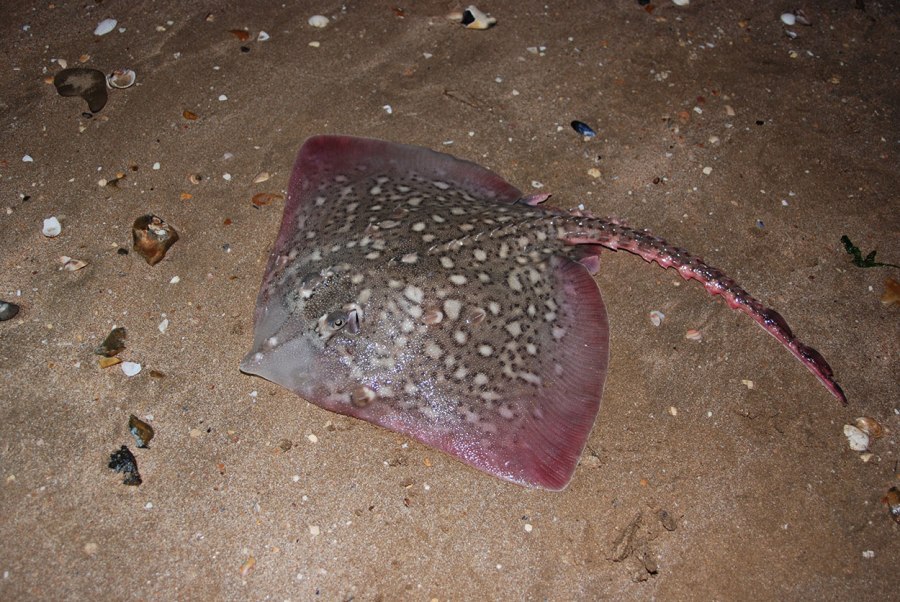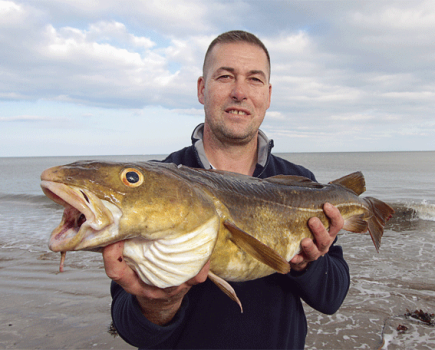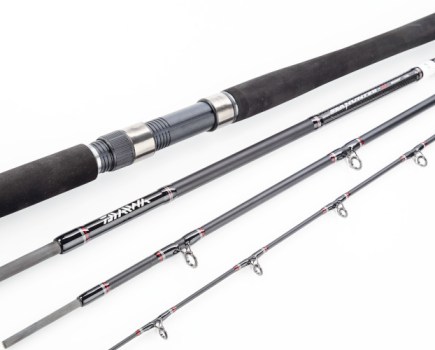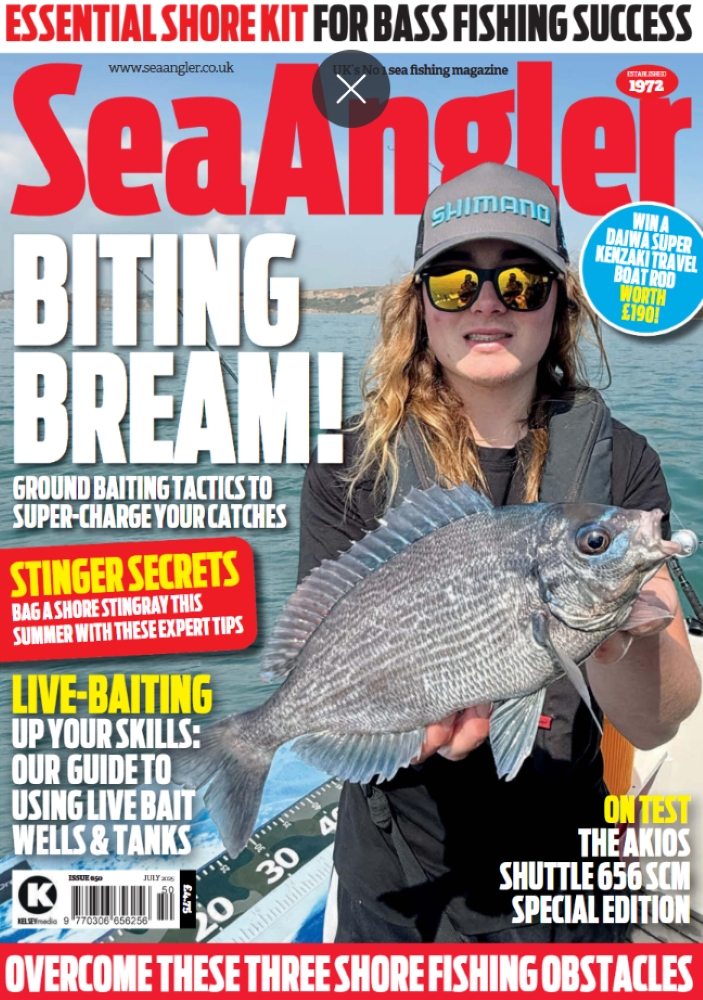This fantastic-looking fish has a typical diamond shaped body with long tail. They have been caught measuring 1m, but the general maximum size is around the 85cm mark.
They are common all around the British Isles and Ireland, living over muddy, sandy and gravelly bottoms. Luckily for us anglers, thornback rays tend to prefer quite shallow water of between 10 and 60m deep.
IDENTIFICATION
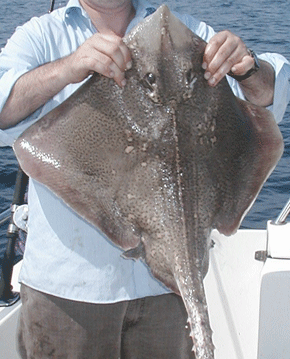
These wings are slightly pointed to form right angles at the tips, also the thornback ray’s nose is very short and dumpy.
There are rows of sharp thorns along the tail (often called bucklers). There are also a few spines scattered over the back too.
The colour of the thornback ray is very variable but generally they have mottled brown to grey backs with lots of darker blotches and lighter patches.
The underside is a creamy white with a grey outer.
FEEDING
Thornback rays feed mainly at night – they spend most of the daylight hours resting on the bottom, covered in sand for added camouflage.
They feed on the bottom, picking off crustaceans, crabs and shrimps, but they will also eat small fish, worms, molluscs and echinoderms.
To catch a thornback ray, use worm, strips of squid or crab baits.
BREEDING
Like all rays and skates, the male thornback ray uses a pair of claspers positioned at the base of the tail to help transfer sperm to the female. The females to don bear live young, instead they lay eggs encased in a ‘mermaid’s purse’ – this is an oblong dark package measuring around 6-9cm. They have long horns at each of the four corners.
The females travel inshore to lay these eggs in the springtime, laying around 20 of these capsules.. They take up to 5 months to hatch, and the emerging ray is around 8cm from wing to wing.
During the summer many of these tiny rays can be found very close inshore. This is when you will also find the discarded mermaid’s purses washed up onto the shoreline.

